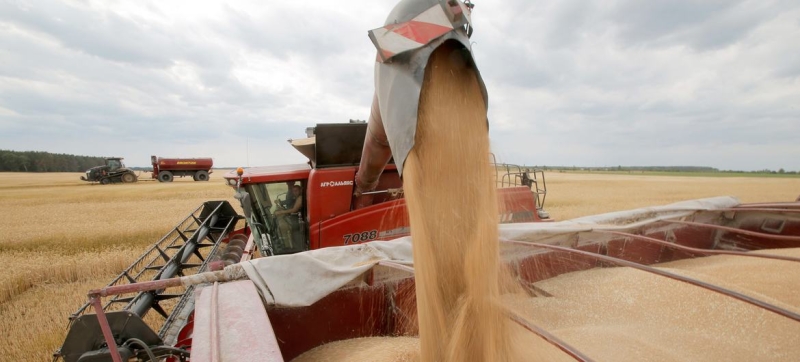
Wheat harvest in Ukraine. FAO: food prices rise for third month in a row Economic development
World food prices rose for the third month in a row in May: the increase in the cost of grain and dairy products outweighed the decrease in quotations for sugar and vegetable oils. The Food and Agriculture Organization of the United Nations (FAO) announced this on Friday.
The FAO Food Price Index, which tracks monthly changes in the prices of the world’s most common food commodities, settled at 120.4 points in May, up 0.9 percent from April but 3.4 percent below a year earlier and 24.9 percent below its peak in March 2022.
Cereal Prices
Cereal prices rose 6.3 percent from April, driven by a rise in world wheat export prices, reflecting growing concerns over unfavourable crop conditions in major producing regions. Maize export prices also rose, helped by production problems in Argentina due to the Spiroplasma disease and in Brazil due to unfavourable weather, as well as limited sales activity in Ukraine. The rice price index rose 1.3 percent in May.
Meat, milk and sugar
The dairy product cost index increased by 1.8 percent compared to April, driven by increased demand ahead of the summer holidays, as well as expectations market that milk production in Western Europe could fall below historical levels. Renewed demand for imports from some countries in the Middle East and North Africa also contributed to rising dairy prices.
The sugar price index fell 7.5 percent from April , mainly influenced by the good start to the season in Brazil. Lower world crude oil prices also put pressure on the price of sugar, reducing demand.
The vegetable oil price index decreased by 2.4 percent compared to April.  ;
The cost of meat decreased by 0.2 percent: international prices for poultry and cattle fell, while prices for eggs and pig meat rose.
Forecast for the next season
Also on Friday, FAO released its first forecast for the 2024-2025 season, which pegged global cereal production at 2,846 million tonnes, matching record production in 2023-2025. 2024 Global production of corn and wheat is projected to decline, while production of barley, rice and sorghum is projected to increase. Recent adverse weather conditions in the Black Sea region are likely to reduce global wheat production.
Total global cereal use is expected to increase by 0.5 in 2024-25 percent to a new record high of 2,851 million tons, driven by rising food consumption, especially rice.
World grain stocks are likely to increase by 1.5 percent compared with the level at the beginning of the year and will reach a record level of 897 million tons. Inventories of corn, barley, sorghum and rice are expected to increase, while wheat stocks may decline.
World grain trade is projected to decline by .3 percent from the previous year to 481 million tons, driven by lower corn trade prospects. International trade in rice is projected to grow at a high rate.
